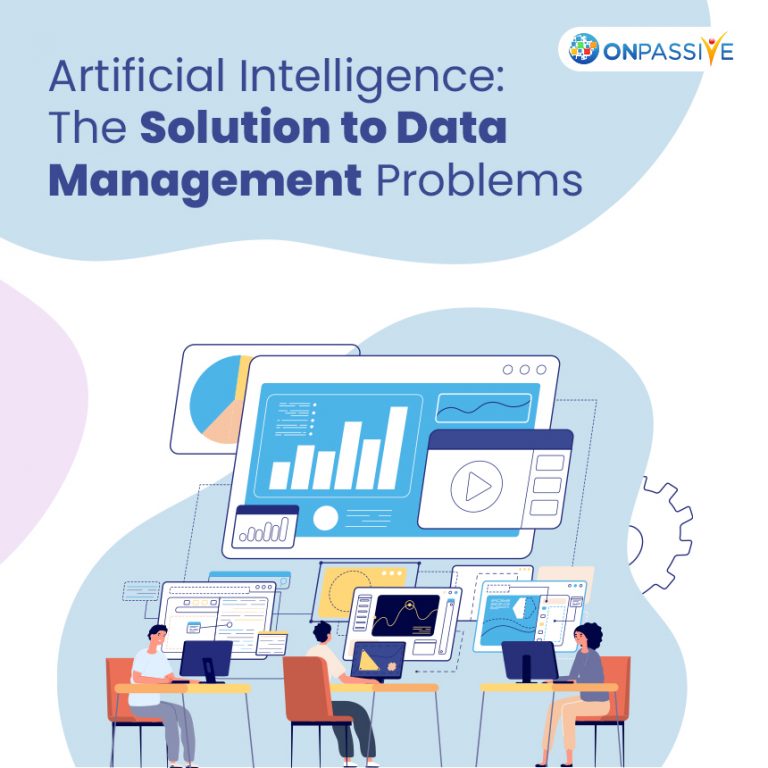
As organizations grow over time, the data continues to stream in. And if not managed on a daily basis, it will accumulate to a point where organizations will have to face various repercussions such as data breach which will tarnish the image of the organization. In 2018, due to poor data management and security, 50 million Facebook users’ accounts were hacked, exposing a huge volume of customer data.
Proper data management empowers organizations. However, managing large amount of unstructured data on a regular basis is a time-consuming and complex task when addressed manually. So, the question is how to manage it in the most efficient manner. Artificial Intelligence and Machine Learning, with their ability to break down complex tasks and automate it make them an apt solution to manage the incoming data. Here, in this article we will discuss briefly on how AI is helping organizations in data management.
Identify and Structure Dark Data
Data streams in through different sources in the form of email, document, text messages, images, and videos in an organization. And most of this data is untouched and people know nothing about it. If you own an enterprise, it might be a known fact to you that data is scattered across different places in a data server. However, most of this data is unused. This data might add great value to your business and improve efficiency. Experts state that around 80% of data stored by enterprises is dark.
Gartner defines dark data as “the information assets organizations collect, process and store during regular business activities, but generally fail to use for other purposes (for example, analytics, business relationships and direct monetizing).”
Firstly, to use this data, it needs to be structured. Artificial Intelligence, with Machine Learning (ML) and Natural Language Processing (NLP), analyzes this data, modifes it and converts it into a structured form. Once the whole dark data is structured, organizations can make quicker and better decisions and discover smarter insights, driving a productive business outcome.
Eliminate Invaluable Data
At home we might see a lot of things that take up our living space. Some will be used very frequently and some on rare occasions. Meanwhile, we also come across plenty of things that are never used and eat up a lot of space. At such situations, what we do is we identify such things and determine if they have any value or any reason to keep it. The same implies to data as well.
Identifying data that is seldom or never used will help organizations to save plenty of space on data server. However, to identify and drive out such obsolete or potentially obsolete data is a tedious and time-consuming activity. Artificial Intelligence, in this scenario, acts as a saviour. AI, with machine learning and analytic capabilities, analyzes the whole data on the server, examines it and determines that data which is not used for a long time. Instead of automatically eliminating the data, it intimates the employees about it, enabling them to decide on what to keep and what to throw away.
Data Aggregation
Data Aggregation is an important process that involves gathering data from different data sources with the purpose of integrating these sources into a summarized format for data analysis. Data aggregation is performed by analytic developers for queries. And for this, they create a storehouse for the application. Then, with the help of integration methods they access various sources and determine the types of data that need to be aggregated and develop an analytic data pool.
However, when done with human touch, this process becomes more complex and the results might be less accurate. Machine Learning technology automates this process by developing mappings between the sources and the storehouse, making the entire process efficient and accurate.
Data Storage Optimization
Conventionally, storage optimization was a tedious task handled by storage managers. It took them massive time to carry out this process. However, the significant growth in automated storage management technologies over the past few years has empowered IT departments to leverage smart storage engines, with Artificial Intelligence and machine learning, to differentiate and organize data.
As we mentioned above, machine learning helps IT department to automatically identify the kind of data that is frequently used, and those which are hardly or never used. Data is automatically stored in repository based on the business strategies and rules inserted into machine algorithms. Thereby, saving a lot of time and effort of employees, while addressing storage optimization manually.
Conclusion
Data Management has always been a major challenge for most organizations across the globe. However, incorporation of AI has turned out to be a solution for this challenge. From identifying dark data to data storage optimization, machine learning capabilities is helping IT department of various organizations to manage and structure huge data volume in simple and automated ways. With significant advancements in AI, data management process is expected to be more agile and efficient in near future.


